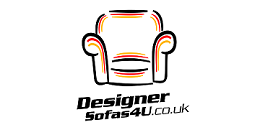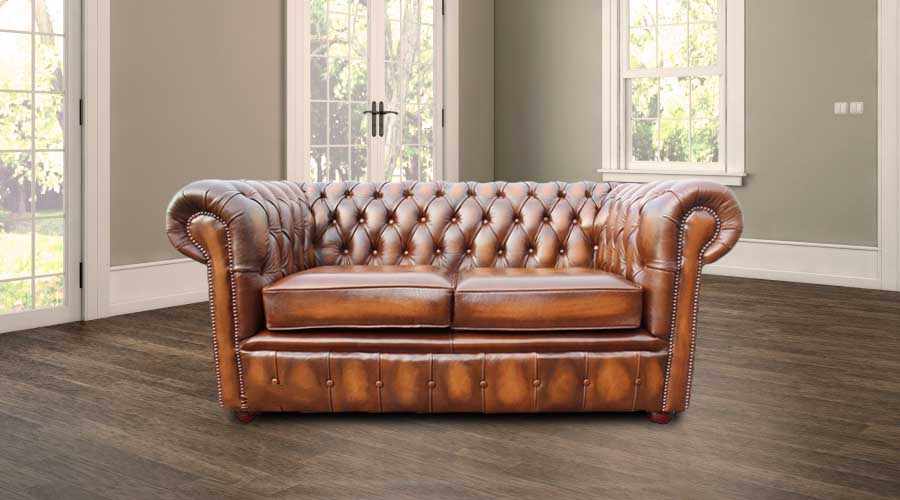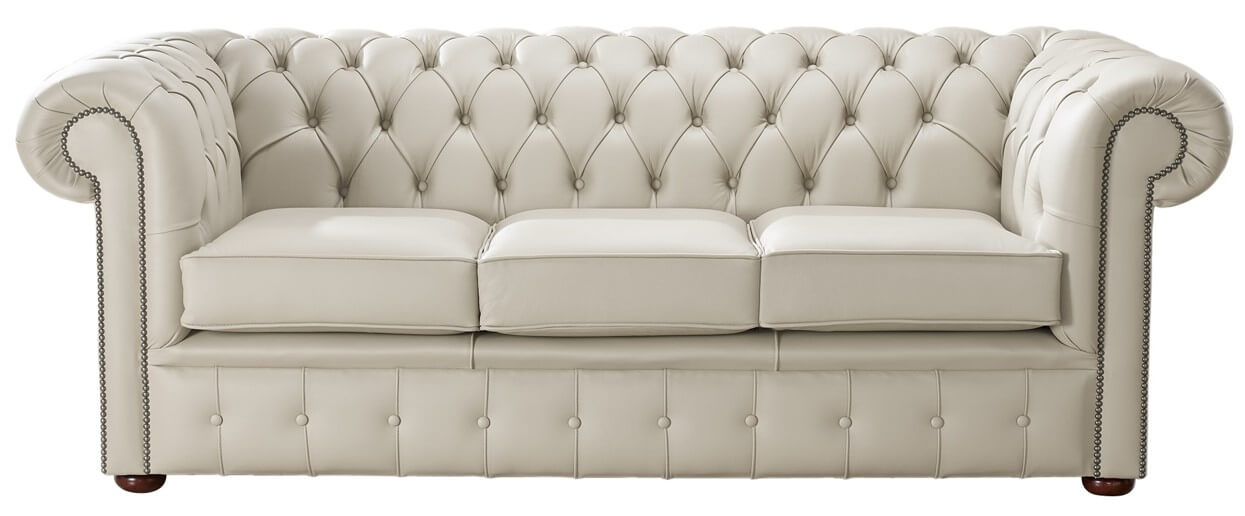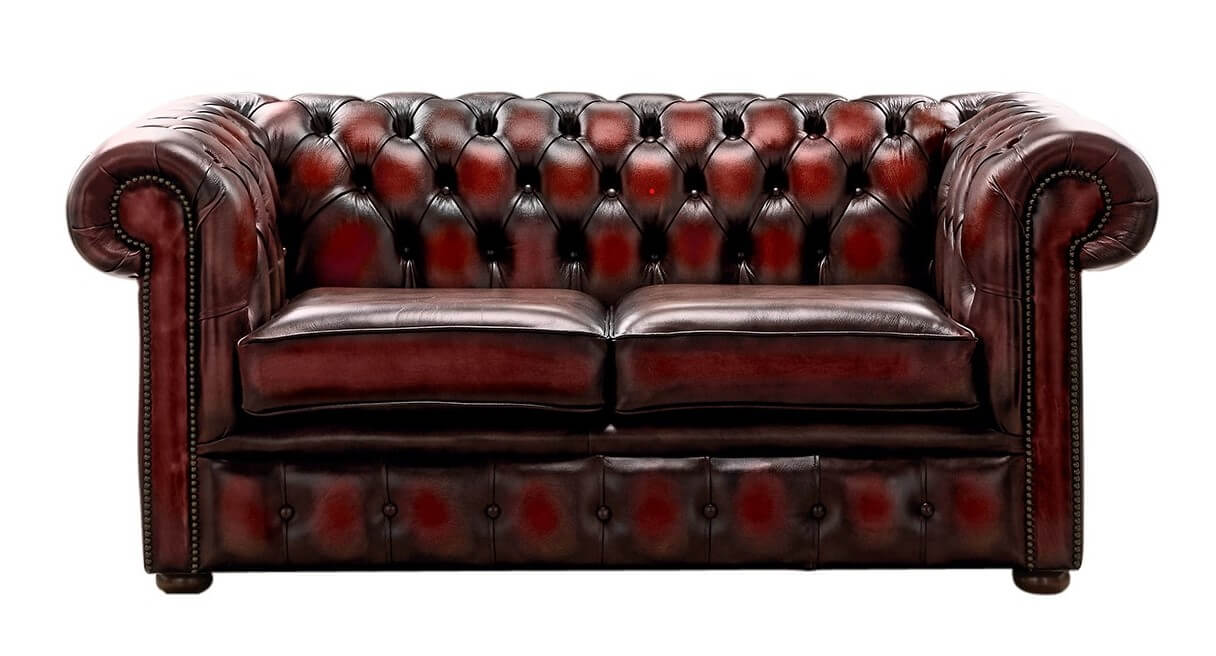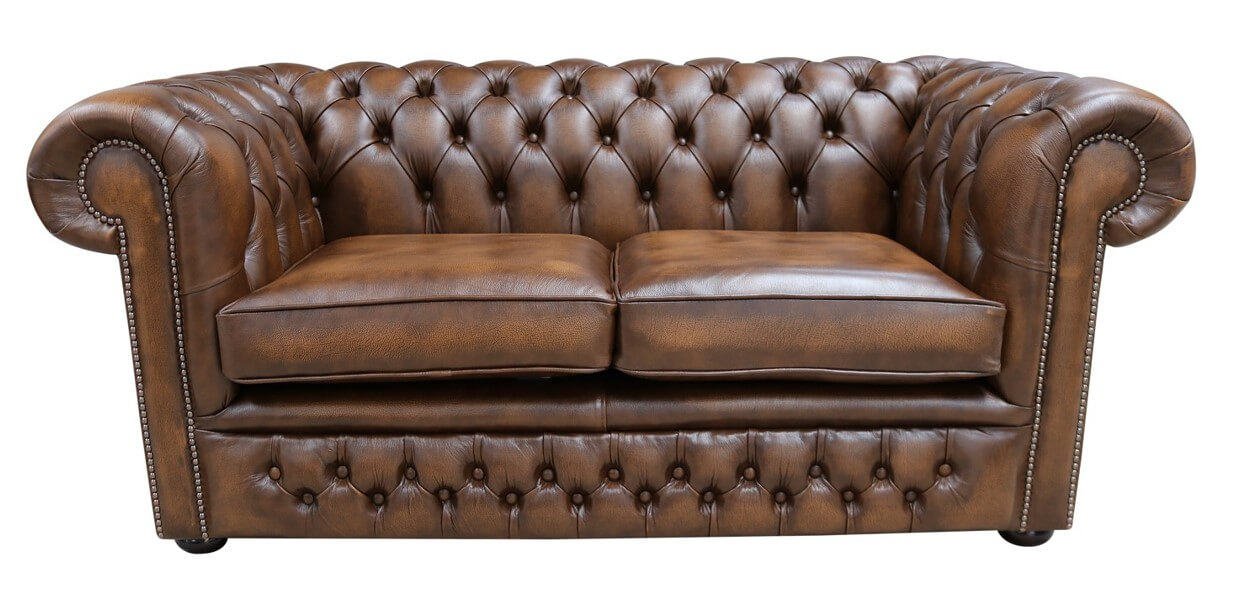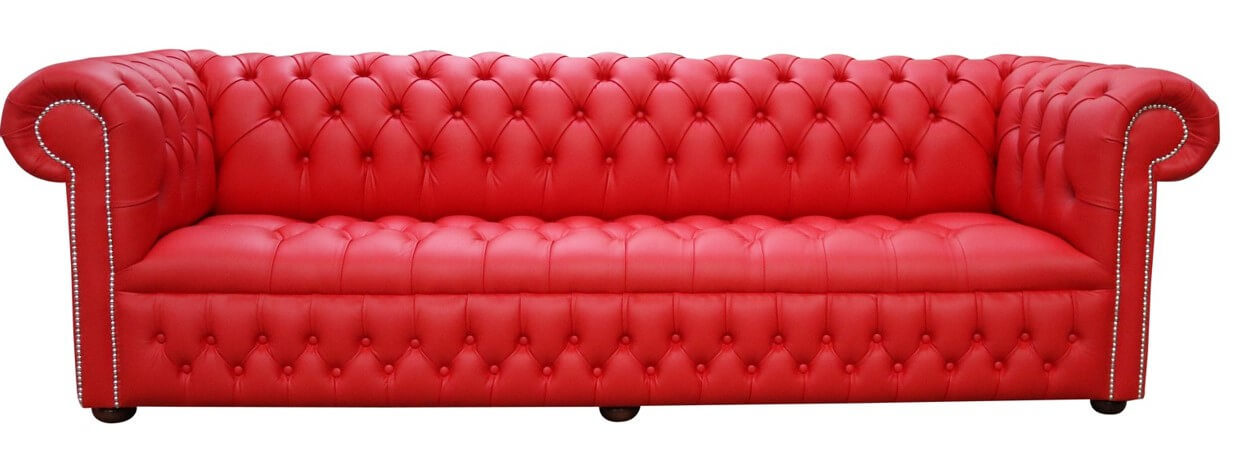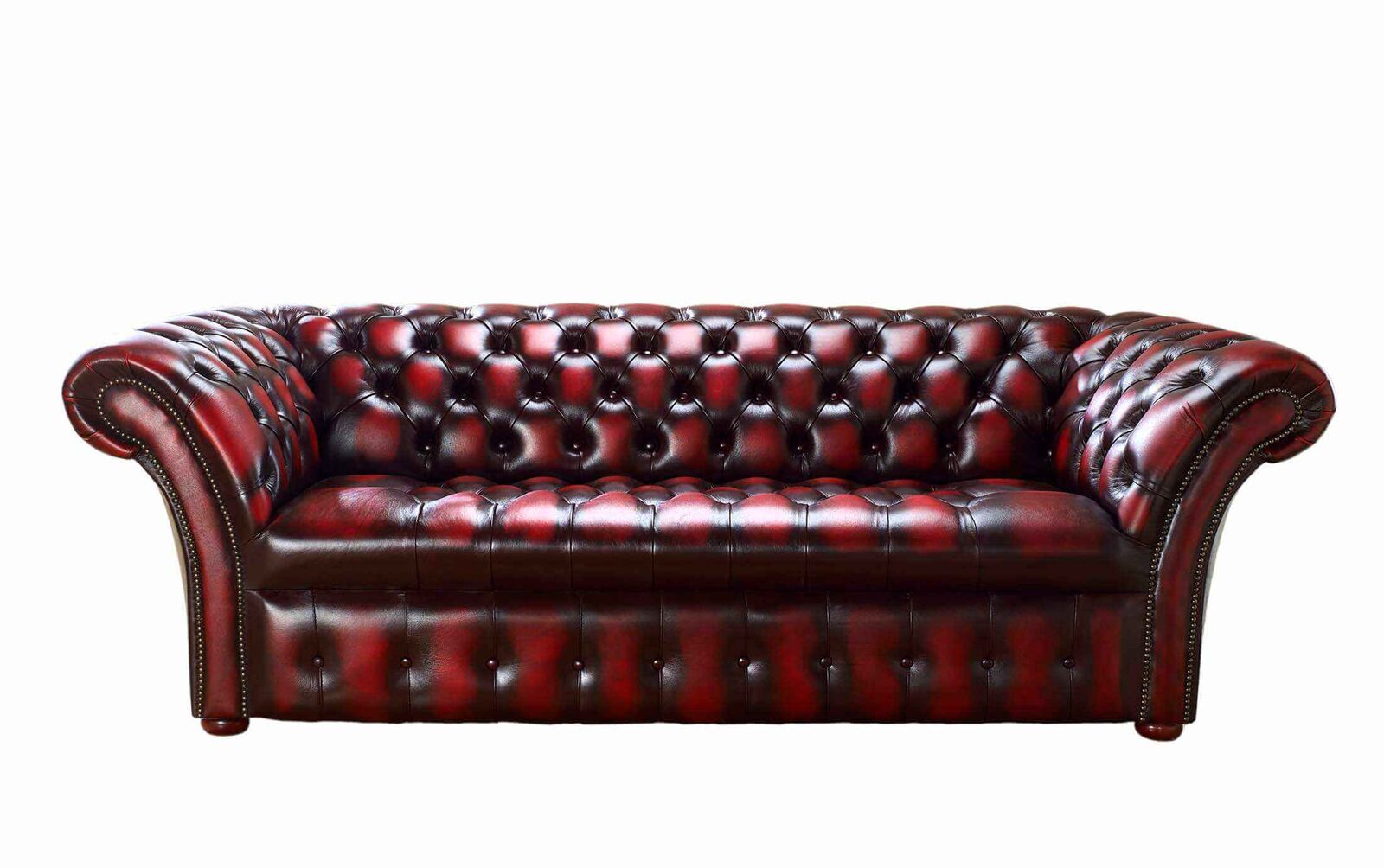What to watch out for in a poor-quality Chesterfield
One of the biggest indicators of a poor-quality Chesterfield sofa is the use of imitation leather in the place of the real thing. A good indicator of quality is to see if there are any natural imperfections in the hide — if there are then the chances are that it is genuine and of good-quality. Artificial hide usually has a repeated pattern embossed into it, and therefore contains no natural imperfections. Additionally, many of the antiquing effects applied to poor-quality Chesterfields are simply sprayed and stained onto the leather. These areas are susceptible to wear and tear, and can be rubbed off to leave a patchy appearance.
You also need to be aware of sofas that are sold as ‘genuine leather’ but are not fully so. In these cases, the cover on the arms, back, and cushions will often be real, but vinyl is sometimes used on the underarms and outback. The leather will sometimes be from full hides or as offcut pieces sewn together to make larger sheets — often referred to as a ‘demic’. The stitching on this type of material can pull loose over time, leaving gaps in your sofa covering for dirt to enter.
The detailing on a Chesterfield is what sets it apart from regular sofas and gives it the distinctive look that has been so popular for so long. Deep buttoning, attractive studding, and rolled arms are all hallmarks of this classic design, so it makes sense that a lot of care needs to go into their creation.
What to look for in a good-quality Chesterfield
The deep-buttoning on a Chesterfield is what gives it the sofa its shape, as well as forming part of its style. The art of deep buttoning is difficult and can only be completed to a professional standard by experienced craftspeople. Each button is precisely positioned, while the downward pressure holds the neat pleats in place. Buttons are firmly secured against the frame to ensure that the iconic effect is held in place for the lifespan of the sofa.
Studs are mainly used in the building of a Chesterfield sofa to add detail to the rolled arms and across the body of the sofa. A good-quality piece will have hand-tacked studs, each of which have been individually driven through the upholstery and into the frame. Through this method, the craftsperson can be sure that every stud will remain securely in place.
What to watch out for in a poor-quality Chesterfield
When it comes to deep buttoning, the main problem with cheap Chesterfields is that they are not sunk deep enough. Where buttons are traditionally secured to the frame, mass produced sofas are often only sunk into the cushioning and attached to the frame around the edges. This can allow movement in the buttons over time as they become detached, creating sags and creases in the material. Eventually, the sunken button effect will disappear completely.
As hand-tacking each stud is a time-consuming and painstaking task, cheaper Chesterfields will often employ strip studding, where only one in every few studs is hammered into the frame. This leaves the studs in between ‘floating’ on the surface, creating a less secure detail that is more susceptible to everyday wear and tear. Investing in a Chesterfield sofa with individually hand-tacked studs rather than strip studs will also allow you to choose from styles with more intricate patterning, which can only be achieved through individual studding.
